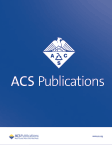摘要 PO3-18-08:溴结构域和末端外结构域(BET)抑制剂与成纤维细胞生长因子受体(FGFR)抑制剂合理联合治疗浸润性小叶癌
IF 3.4
Q2 PUBLIC, ENVIRONMENTAL & OCCUPATIONAL HEALTH
引用次数: 0
摘要
背景:浸润性小叶癌(ILC)是仅次于浸润性导管癌(IDC)的第二大侵袭性亚型,约占所有乳腺癌的 10-15%。其特点是 E-cadherin表达缺失,非粘附性肿瘤细胞以 "单排 "模式侵入基质。患有 ILC 的妇女通常诊断年龄较大,ER 阳性疾病的分期较晚。与 IDC 相比,ILC 更容易晚期复发,并转移到胃肠道和泌尿生殖道。ILC通常采用抗内分泌治疗和化疗,但与IDC相比,ILC虽然不是完全的化疗难治性疾病,但对化疗的反应较差。因此,复发疾病的治疗方案有限,迫切需要开发针对 ILC 的定制疗法,尤其是针对复发患者的疗法。由BRD2/3/4/T组成的溴域和外端域(BET)蛋白家族是一种表观遗传读取器,能与组蛋白上的乙酰化赖氨酸残基结合,并招募转录因子来驱动癌基因的表达。此前,我们发现 BRD3 是 ILC 预后不良的标志物,而且有新证据表明 BET 抑制剂(iBET)对多种类型的乳腺癌有效。在此,我们研究了 iBET 单独或与表皮生长因子受体抑制剂联合用于 ILC 的治疗潜力。研究方法利用两种典型的 ILC 细胞系 MDA-MB-134VI (MM134) 和 SUM44PE (SUM44),测定了一组 iBET 的 IC50。应用 RNA 测序和 Genexplain 分析揭示了转录网络、主调控因子和潜在的抗性机制。我们使用 siRNA 敲除了 BRD3 和 FGFR3,以评估它们在 ILC 细胞系中的功能。此外,我们还利用乳腺导管内(MIND)植入的 ILC 细胞衍生异种移植(CDX)模型,在 SCID-beige 小鼠体内评估 iBET 单独或与成纤维细胞生长因子受体(FGFR)抑制剂联合使用的治疗效果。结果:我们证实,iBET在二维和三维培养中都能显著抑制ILC细胞的生长,其中JQ1和Mivebresib(ABBV-075)的效力最强。RNA 序列分析表明,iBET 处理后细胞周期分裂、DNA 损伤、细胞凋亡和 MAPK 信号转导的通路失调。使用 Genexplain 对转录图谱进行逆向工程分析后发现,在两种细胞系和两种 iBET 的 142 个 MTR 中,表皮生长因子受体 3 是一个显著上调的主调节因子 (MTR)。iBET 处理后,FGFR3 的上调在蛋白水平上通过 Western 印迹得到了验证。我们还发现,BRD3 和 FGFR3 的敲除能显著抑制细胞生长,这支持了它们在 ILC 进展中的关键作用。此外,我们还分析了 iBET 与表皮生长因子受体抑制剂厄达非替尼联用时的治疗效果,以克服 iBET 治疗后表皮生长因子受体上调导致的潜在耐药性。这表明,与单独使用其中一种药物相比,iBET 和厄达菲替尼联合使用能更有效地抑制 ILC 细胞的生长。此外,我们的体内研究表明,与载体组相比,JQ1能抑制SUM44-MIND模型中的肿瘤生长,并减轻向腹膜、骨和卵巢的转移。此外,我们还评估了米韦布瑞布和厄达菲替尼的体内联合治疗效果。结果显示,在 MM134-MIND 和 SUM44-MIND 模型中,iBET 和 FGFR 抑制剂可协同降低肿瘤负荷和转移潜力。结论我们的研究结果证明,iBET无论是单独使用还是与厄达菲替尼联合使用,都能在体外和体内显著有效地抑制ILC的生长,是未来治疗复发性ILC患者的合理治疗策略。引用格式治疗浸润性小叶癌的溴基底膜和末端外结构域(BET)抑制剂与成纤维细胞生长因子受体(FGFR)抑制剂的合理治疗组合[摘要]。在:2023 年圣安东尼奥乳腺癌研讨会论文集;2023 年 12 月 5-9 日;德克萨斯州圣安东尼奥。费城(宾夕法尼亚州):AACR; Cancer Res 2024;84(9 Suppl):Abstract nr PO3-18-08。本文章由计算机程序翻译,如有差异,请以英文原文为准。
Abstract PO3-18-08: Rational therapeutic combination of Bromodomain and Extra-Terminal domain (BET) inhibitor and Fibroblast Growth Factor Receptor (FGFR) inhibitor for treatment of invasive lobular carcinoma
Background: Invasive lobular carcinoma (ILC) is the second most pervasive subtype after invasive ductal carcinoma (IDC), accounting for approximately 10-15% of all breast cancers. It is characterized by loss of E-cadherin expression and non-adherent tumor cells that invade the stroma in a “single-file” pattern. Women with ILC are typically diagnosed at an older age and later stage with ER-positive disease. ILC is more likely to exhibit late recurrence and metastasize to the gastrointestinal tract and urogenital tract compared with IDC. It is routinely treated with anti-endocrine therapy and chemotherapy, however, while not entirely chemo-refractory, displays a poor response to chemotherapy compared with IDC. As such, options for recurrent disease are limited and there is an urgent need to develop tailored therapy for ILC, especially for those patients that recur. The family of bromodomain and extra-terminal domain (BET) proteins, comprising BRD2/3/4/T, are epigenetic readers that bind to acetylated lysine residues on histones and recruit transcription factors to drive the expression of oncogenes. Previously. we discovered that BRD3 is a marker of poor prognosis in ILC and there is emerging evidence that BET inhibitors (iBET) are effective in diverse types of breast cancer. Here, we investigated the therapeutic potential of iBET in ILC, alone and in combination with FGFR inhibitors. Methods: IC50s for a panel of iBET using two typical ILC cell lines MDA-MB-134VI (MM134) and SUM44PE (SUM44) were determined. RNA-sequencing and Genexplain analysis was applied to reveal transcriptional networks, master regulators and potential resistance mechanisms. BRD3 and FGFR3 were knocked down using siRNA to evaluate their function in ILC cell lines. Furthermore, we utilized ILC cell-derived xenograft (CDX) models in SCID-beige mice established by mammary intraductal (MIND) implantation to evaluate the therapeutic potency of iBET alone or in combination with fibroblast growth factor receptor (FGFR) inhibitor in vivo. Results: We demonstrated that iBET significantly inhibited ILC cell growth in both 2D and 3D culture, with the greatest potency demonstrated by JQ1 and Mivebresib (ABBV-075). RNA-sequencing revealed dysregulated pathways in cell cycle division, DNA damage, apoptosis and MAPK signaling following iBET treatment. Reverse engineering of transcriptional profiles using Genexplain revealed that FGFR3 is a significantly upregulated master regulator (MTR) among 142 MTRs across both cell lines and both iBETs. Upregulation of FGFR3 after iBET treatment was verified at the protein level by Western blotting. We also show that BRD3 and FGFR3 knockdown significantly inhibited cell growth, which supports the key role both play in ILC progression. Further, we analyzed the iBET therapeutic effect when combined with the FGFR inhibitor, erdafitinib, as a strategy to overcome potential resistance due to FGFR upregulation post iBET treatment. This revealed that the combination of iBET and erdafitinib could inhibit ILC cell growth more effectively compared to using either agent alone. Furthermore, our in vivo study showed that JQ1 could inhibit tumor growth in a SUM44-MIND model and alleviate metastasis to peritoneum, bone and ovary compared with the vehicle group. Moreover, we also assessed the combination of mivebresib and erdafitinib in vivo. This revealed that iBET and an FGFR inhibitor work synergistically to decrease tumour burden and metastatic potential in both MM134-MIND and SUM44-MIND models. Conclusion: Our results provide evidence that iBET, either alone or in combination with erdafitinib, is remarkably effective at inhibiting ILC growth, both in vitro and in vivo and represents a rational therapeutic strategy for recurrent ILC patients in the future.
Citation Format: Binbin Gao, Elspeth Ward, Anna Blümel, Emer Conroy, Rachel Moore, Grainne Cremin, Rachel Bleach, Kathryn Haley, Tríona Ní Chonghaíle, Andreas Lindner, Jochen Prehn, Yi Zhang, Idalia Cruz, Leena Hilakivi-Clarke, Georgios Sflomos, Cathrin Brisken, William Gallagher, Darran O'Connor. Rational therapeutic combination of Bromodomain and Extra-Terminal domain (BET) inhibitor and Fibroblast Growth Factor Receptor (FGFR) inhibitor for treatment of invasive lobular carcinoma [abstract]. In: Proceedings of the 2023 San Antonio Breast Cancer Symposium; 2023 Dec 5-9; San Antonio, TX. Philadelphia (PA): AACR; Cancer Res 2024;84(9 Suppl):Abstract nr PO3-18-08.
求助全文
通过发布文献求助,成功后即可免费获取论文全文。
去求助
来源期刊

ACS Chemical Health & Safety
PUBLIC, ENVIRONMENTAL & OCCUPATIONAL HEALTH-
CiteScore
3.10
自引率
20.00%
发文量
63
期刊介绍:
The Journal of Chemical Health and Safety focuses on news, information, and ideas relating to issues and advances in chemical health and safety. The Journal of Chemical Health and Safety covers up-to-the minute, in-depth views of safety issues ranging from OSHA and EPA regulations to the safe handling of hazardous waste, from the latest innovations in effective chemical hygiene practices to the courts'' most recent rulings on safety-related lawsuits. The Journal of Chemical Health and Safety presents real-world information that health, safety and environmental professionals and others responsible for the safety of their workplaces can put to use right away, identifying potential and developing safety concerns before they do real harm.
 求助内容:
求助内容: 应助结果提醒方式:
应助结果提醒方式:


